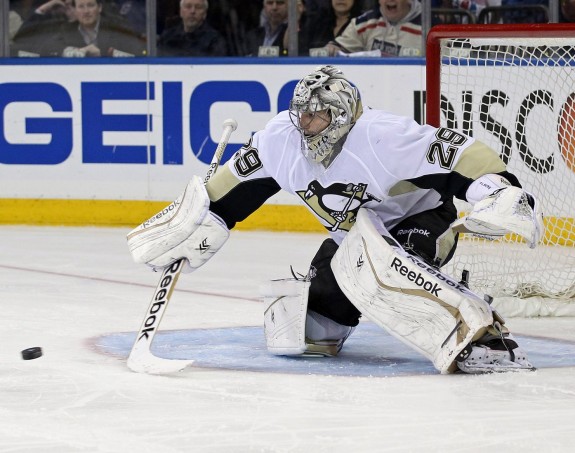Choosing the right goalie stick is essential whether you are a beginner or professional athlete. Stick design can improve your stance, puck-handling abilities, and your mobility. When choosing choosing goalie sticks, it is important to keep in mind their unique construction and specific characteristics, namely lie, curve type, curve depth, face angle, and paddle length. In addition to design preferences, a goalie stick must also be in compliance with specific NHL regulations.

NHL Rules and Regulations for Goal Keeper Sticks
Stick Shaft Protection
At the top of the stick shaft, there must be a knob of white tape or some other protective covering, which is approved by the league. The knob of protective material should be equal to or thicker than 1/2″. If a player refuses to make adjustments to the covering, he will be deemed “unfit” for play.
Blade Dimensions
A goalie’s stick blade should be more than 2″ long but the overall length cannot exceed 3 1/2″. In the location where the heel joins the shaft, the measurement should not exceed 4 1/2″. The total blade length of a goalie sick should not exceed 15 1/2″.
Length of Stick
The overall length of a stick shaft should be no more than 63″. If a player is over 6’6″ tall, he may be allowed to use a longer stick but the longer shaft length must be approved by a representative of Hockey Operations.
Blade Curvature
Goalie blades must be curved forward and the overall curvature of the blade must not exceed 3/4″. How blade curve is measured is relatively simple. First, find the deepest point of the curve, next draw an imaginary line from the stick’s heel to tow. Now, draw a perpendicular line that intersects at the deepest point of the curve and the straight line. If that point is 3/4″ or less, the curvature is within NHL regulations.
Broken Stick Rules
Unlike the rules regarding other players, a goalie can continue to play with the broken stick until he can make it to the bench during a pause in the game to retrieve a new one. He can also be handed a stick from a fellow player; however, this must be considered a legal hand-off. The player handing off the stick cannot slide or throw the goalie a new stick, it must be physically handed to the goalie. This rule also applies to situations when a goalie has lost his stick during game play.
It is not authorized for a goalie to leave his post during game play to get a new stick. However, he can use a player’s stick if it is legally handed to him. If this rule is violated, the goalie will receive a minor penalty.
Game Play Checks
Game play checks of player sticks are no longer authorized by the NHL. Sticks and other gear must be evaluated by a Hockey Operations rep outside of games.
Stick Construction
Currently there are several different types of materials which are NHL approved for ice hockey stick construction. Depending on your style and position, you may use wood, aluminum, fiberglass, graphite, Kevlar, and most recently titanium.
Choosing the right stick can improve your overall performance. When picking the perfect goalie stick, be sure to keep these important regulations in mind to avoid costly game play penalties.